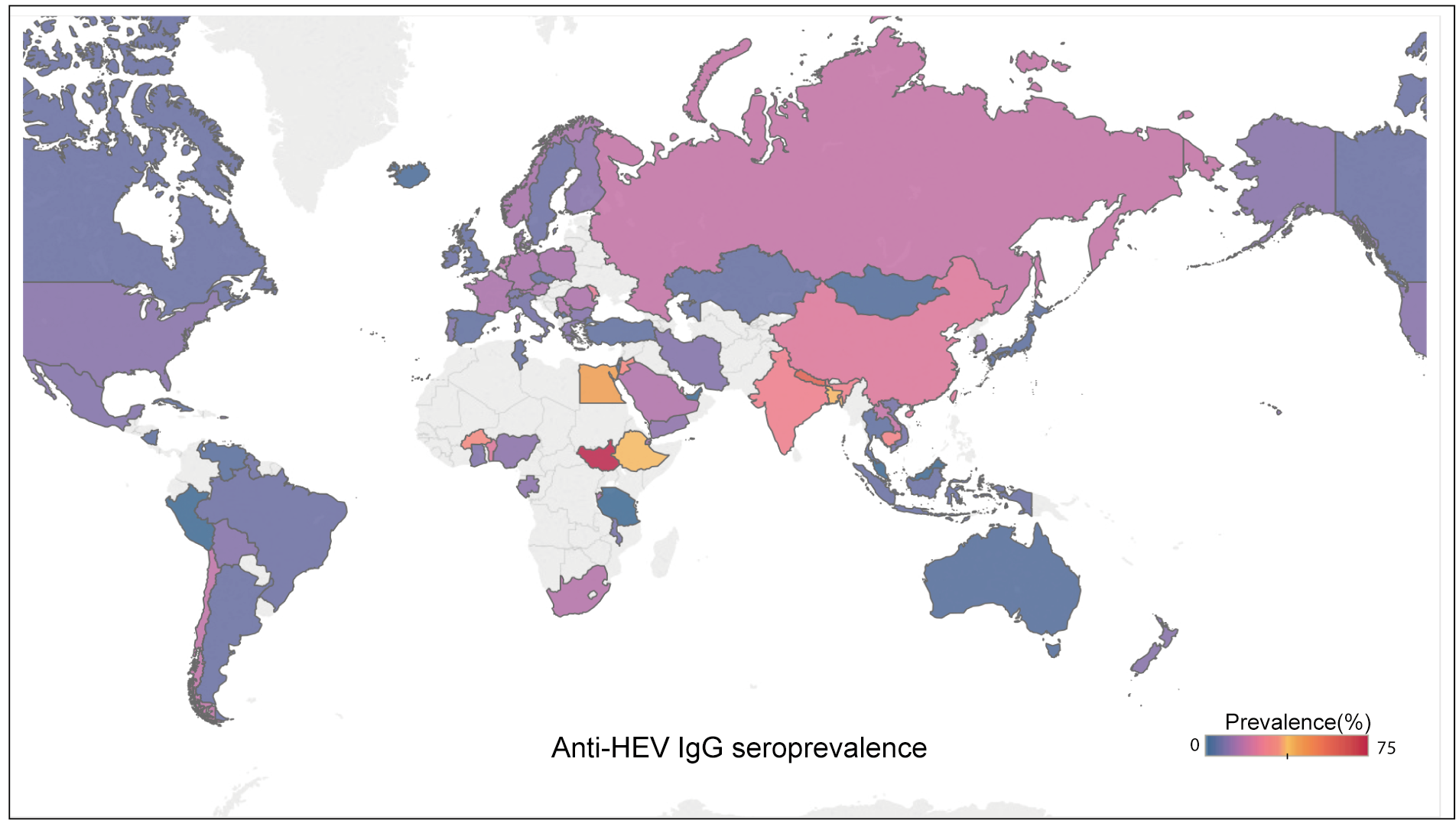Hepatitis E virus (HEV) infection is found worldwide. It is common in low- and middle-income countries, and is also emerging in industrialized countries. But what is the global epidemiology and the clinical burden; here are some sources analyzing these issues.
The World Health Organization (WHO)1 estimates that every year there are about 20 million HEV infections worldwide, leading to an estimated 3.3 million symptomatic cases of hepatitis E. Based on estimation in 2015, hepatitis E caused approximately 44,000 deaths accounting for 3.3% of the mortality due to viral hepatitis.
A mathematical modeling study2 has attempted to estimate the annual global impact of HEV infections caused by genotypes 1 and 2 in Africa and Asia. Genotype 1 and 2 HEV exclusively infect humans and are widely circulating in Africa and Asia. This study estimated that in 2005 these two genotypes accounted for approximately 20.1 million incident HEV infections, 3.4 million cases of symptomatic disease, 70,000 deaths, and 3,000 stillbirths.
A recent large-scale meta-analysis3 estimated that 12.5% of the global population, corresponding to approximately 939 million individuals, have experienced past-infection of HEV based on their sero-positivity of anti-HEV IgG antibody (Figure). 15-110 million individuals have recent or ongoing HEV infection based on anti-HEV IgM antibody or viral RNA positivity.
In Western countries especially in Europe, zoonotic HEV strains, in particular the genotype 3 and 4, constitutes a major one health issue. Pigs serve as an important reservoir and the processed pork products essentially contribute to foodborne transmission to humans. At global level, a recent meta-analysis4 has estimated nearly 60% domestic pigs and 27% wild boars have ever encountered HEV infection based on seroprevalence rate.
Overall, HEV is widely present everywhere. But the existing data on global HEV epidemiology and disease burden are extrapolated from different sources with different methodologies. Thus, when citing these information, it is of note to be cautious. Future research is certainly needed to further improve the accuracy of these estimates, which is essential for enhancing awareness and facilitating policy-making in combating HEV.
Sources
https://www.who.int/news-room/fact-sheets/detail/hepatitis-e
https://aasldpubs.onlinelibrary.wiley.com/doi/10.1002/hep.25505
https://onlinelibrary.wiley.com/doi/10.1111/liv.14468
https://www.sciencedirect.com/science/article/pii/S235277142100152X?via%3Dihub

